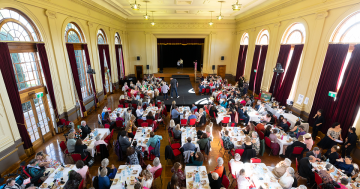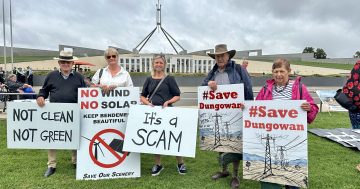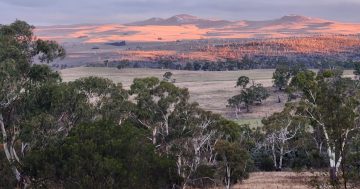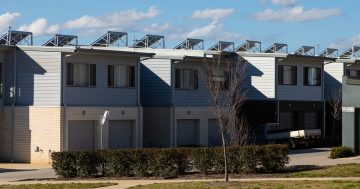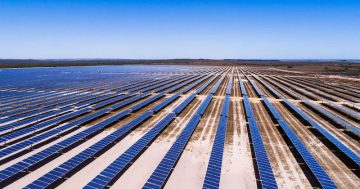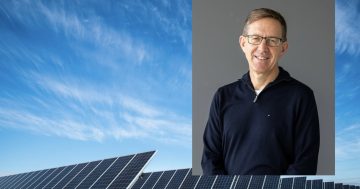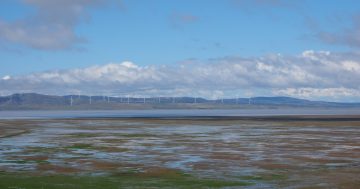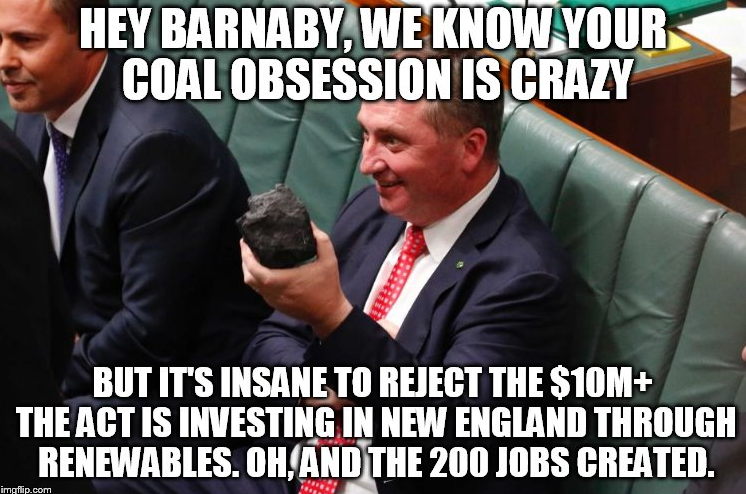
“The ACT saying they want 100 per cent renewables is crazy.”
So said that crazy cat Barnaby Joyce on ABC radio’s AM program yesterday, leading to a war of words with ACT Minister for Climate Change and Sustainability Shane Rattenbury on energy matters.
It could’ve been worse, I guess. Mr Joyce called the comments of another Federal politician “bat poo crazy” last week.
Mr Rattenbury responded to Mr Joyce’s attack on the ACT’s energy policy, saying in a blog post shared on Facebook (and illustrated with the above image) that what was crazy was to ignore “the impacts of climate change on rural communities, including more severe droughts, bushfires and the loss of productive farming areas”.
“Crazy is throwing good money after bad by investing in coal when we know that renewables will secure our clean energy future,” he continued.
“In the ACT we are well on the way to achieving our 100% renewable electricity target by 2020, by securing contracts for around 650 Megawatts of new solar and wind generation.
“We’re proud that the ACT is now leading the country in clean energy, showing leadership when our Federal Government has dragged its feet.”
Just why the Deputy Prime Minister views the ACT Government’s plan for the capital to be powered entirely by renewables by 2020 as “completely insane” is a mystery to me, particularly in light of the current uncertainty around where Australia’s energy will come from nationally over the next few years.
We have plentiful sunshine and wind of our own in the capital region, as well as good access to renewable power sources further afield. Given the rising costs of fossil fuels, why wouldn’t we look to address our needs via solar and wind as soon as possible?
Mr Joyce has remarked that our local Labor representatives have allowed themselves to become too beholden to the Greens on this issue, but he didn’t see first hand the pride with which former Deputy Labor Leader Simon Corbell spoke of the policy he personally initiated and instituted over many years. It is absolutely a Labor policy, and one that is widely supported in this predominantly Labor-voting town. While the Greens support it, of course, and Mr Rattenbury has responsibility for its implementation following Mr Corbell’s departure from the Assembly, it was very much a Labor-driven policy rather than a Greens idea forced on the Government.
As an aside, I think it’s fascinating that Mr Joyce takes such a negative view of renewables given how integral they are to the operations of his core support base. Our windmills are an icon of rural Australia. Solar devices are a more recent addition to the farmer’s toolbox, but are rapidly becoming as essential to operations as the windmill.
As for the rest of Mr Rattenbury’s response to Mr Joyce, here it is in full:
Dear Barnaby,
After hearing you call us ‘crazy’ on the radio this morning, I thought I’d reach out to see how you’re doing in this current (warming) climate.
Let’s talk about crazy for a moment.
Crazy is denying the benefits of the ACT’s investments in renewable energy projects across the country, including the Sapphire Wind Farm, which is coming soon to your electorate of New England.
Crazy is denying the at least $10 million and up to 200 construction jobs this renewable project will bring to your local community.
As the local member for New England, I would like to invite you to join me at the upcoming sod-turning for the Sapphire Wind Farm, where you can see the real impact of this investment in renewables.
Crazy is ignoring the impacts of climate change on rural communities, including more severe droughts, bushfires and the loss of productive farming areas.
Crazy is throwing good money after bad by investing in coal when we know that renewables will secure our clean energy future.
In the ACT we are well on the way to achieving our 100% renewable electricity target by 2020, by securing contracts for around 650 Megawatts of new solar and wind generation.
We’re proud that the ACT is now leading the country in clean energy, showing leadership when our Federal Government has dragged its feet.
Renewables are the quiet achievers, protecting consumers from electricity price spikes caused by the failure of the Federal Government to modernise our electricity market.
In fact, Barnaby, our commitment to clean energy has already delivered $400 million in economic benefits to the ACT.
Crazy, right?
Yours in solidarity,
ACT Minister for Climate Change and Sustainability
Shane Rattenbury
Pictured above is a graphic the Greens used to illustrate Mr Rattenbury’s letter to Barnaby Joyce. Photo: Supplied











